Article
Oracles for Our Community

The Bibles of many preachers are well-worn and underlined except for the section between the Song of Solomon and Matthew, which remains in mint condition, gilded edges still gleaming. How can we bring the Old Testament prophets into the pulpit?
Traditionally, two paths have been taken most frequently.
First, we might trace an OT prophecy from its origins to its eventual fulfillment in history (see figure 1). The lesson is usually that the Bible is true, or that God keeps his Word. Occasionally, fanciful guesses and speculative end-times scenarios haunt this road. Another drawback is that some hearers may not see any relevance for their lives today.
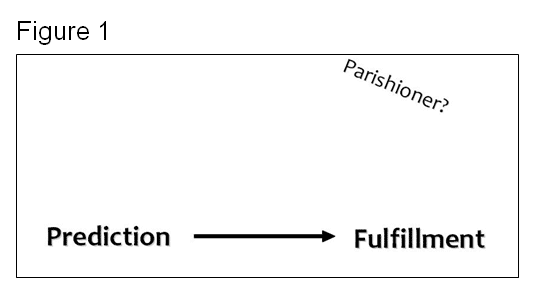
Figure 1
Second, more commonly, we might focus on the sections that tell a story about the prophet's life. Here the preacher draws parallels between the life of the prophet and the lives of the hearers (see figure 2).
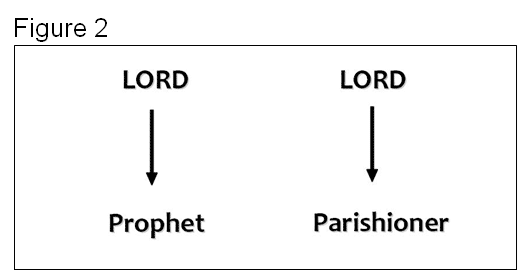
Figure 2
But this approach also suffers from disadvantages. In the first place, it can be overly individualistic. The Holy Spirit inspired Isaiah to create a masterful account of his calling and God's glory in the temple (Isaiah 6). Did God do this just to provide a blueprint for how he might call Joe Smith to a pastorate in Cincinnati? This passage also has other purposes.
In addition, this approach can be inconsistent: it applies some details of a narrative to modern lives and omits others in a manner that seems suspect.
Finally, this approach can drastically limit our available preaching texts, since most of the prophets' writing is not in narrative form. Most sections are prophetic speech—oracles from God to his people Israel, through the mouth of an inspired prophet.
There are other helpful ways to apply and preach the prophetic oracles of the Old Testament. By focusing on the covenant context of a prophetic speech, preachers can apply such a passage to their own church in richly textured ways that are faithful to the biblical author's intent while being helpful for building community.
Prophetic oracles
The prophet shares God's message with those around him, but this revelation from God does not take place in a vacuum. These are not just any people to whom the prophet speaks. They are Israel—the LORD's own nation by covenant. (The term covenant here acts as a unifying motif for all the aspects of God's relationship with Israel. It does not necessitate a covenantal view of theology. Below I will discuss how theological differences may impact one's use of this model.) The people of Israel are bound to the LORD and to one another in an intricate web of relationship, to which the prophets refer again and again (see figure 3).
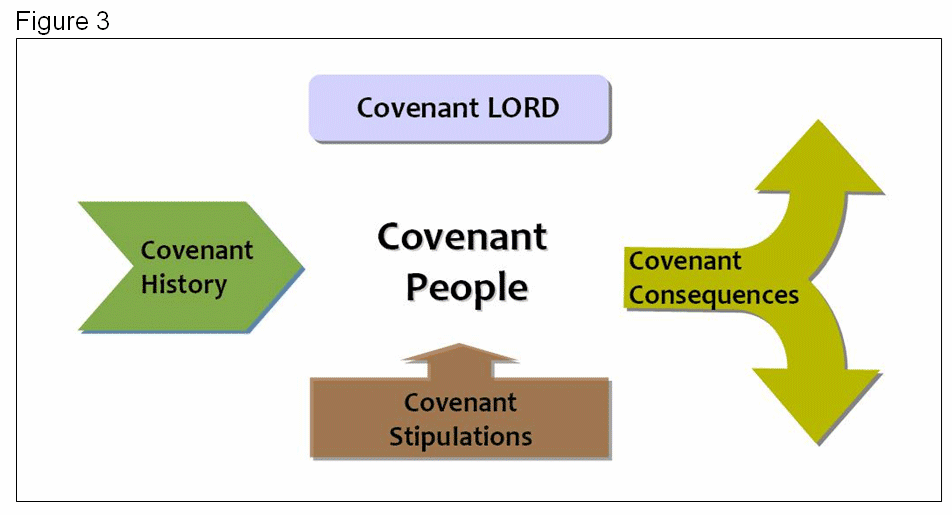
Figure 3
Prophets speak about Israel's covenant LORD, whose character forms a basis for their relationship (Isaiah 44:6-8). They talk about their history with him and his faithfulness in the past (Ezekiel 16:1-14). They remind Israel of the requirements of their covenant with God (Hosea 10:12), and how they have or have not kept them. And they repeat the covenant consequences of blessings for obedience and curses for rebellion (Isaiah 1:18-20). Often a single passage runs through several of these phases in turn. In Micah 6, for example, under the guise of a lawsuit against his people, God reminds Judah of how he brought them into the Promised Land (vv. 3-5), discusses the type of response he requires (vv. 6-8), observes their faithlessness (vv. 9-12), and warns of curses to come (vv. 13-16).
Figure 3 can apply to any of the covenant arrangements that were in effect during Israel's history. The Abrahamic, the Mosaic, and the Davidic covenants were the primary arrangements depicted in the Old Testament. Prophets drew on each one as appropriate, since each covenant carried its own stipulations and consequences. In fact the vast majority of prophetic oracles follow this pattern, highlighting one or more of these covenant elements. This was their standard model.
Applying the prophets to the church community
When applying biblical passages to our hearers, there are a limited range of ways that we can compare the biblical character and the modern audience, drawing life lessons from the experiences of biblical prophets as the main thrust of a passage. Far more comparisons can be made between the biblical audience and the contemporary audience. In other words, instead of focusing on the question, "How are my people like Hosea", we can ask, "How are my people like the people to whom Hosea preached?"
Hosea wrote to the average Israelite. Our audience and Hosea's are alike in that they are audiences addressed by the Lord. Comparisons between audiences will proceed on much safer grounds than comparisons between prophets and audiences because the two groups have so much more in common. So the prophets' words primarily apply to the church at large as God's covenant people, and to the individual Christian as a member of the church.
Our New-Covenant context
New Testament believers also live in covenant with God—what Jeremiah called a new covenant. (See figure 4.) This new covenant is made under the authority of the covenant LORD, in the light of his past deeds for their good (salvation in Christ), under his demands for love and obedience, and in the hope that God's promises of salvation and judgment will be fulfilled at the return of Christ. This similarity provides the surest bridge for applying the prophets today, as the words of the prophets to the OT community are applied to the NT community.
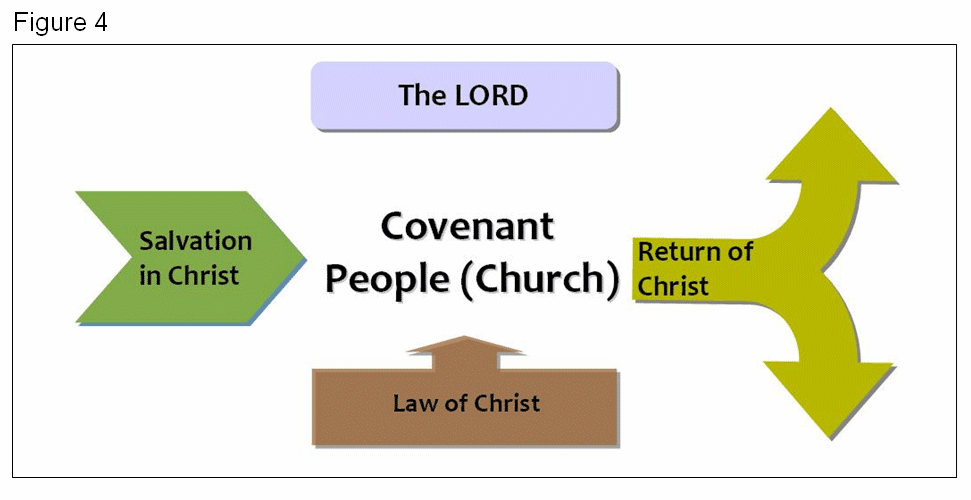
Figure 4
Of course, appropriate application will also take into account the differences between Israel and the church, between the old and new covenants. Much of what we make of these differences will depend upon the theological system to which we subscribe. Some will posit more discontinuity between the covenants, either by drawing a sharp distinction between Israel and the church, or by labeling the old covenant "conditional" (a ministry that produced death) and the new "unconditional" (producing life by the Spirit). Others may see more continuity between the two. How we understand the redemptive situation in Israel and in the church will guide how we apply a prophetic oracle to our people.
Relating their context to ours
The Scriptures record a string of covenant arrangements between God and his people (see figure 5). Each covenant has its own place in redemptive history. Ours comes between the cross of Christ and the return of Christ and as such has unique features that must be reckoned with when seeking to apply Old Covenant principles in a New Covenant situation.
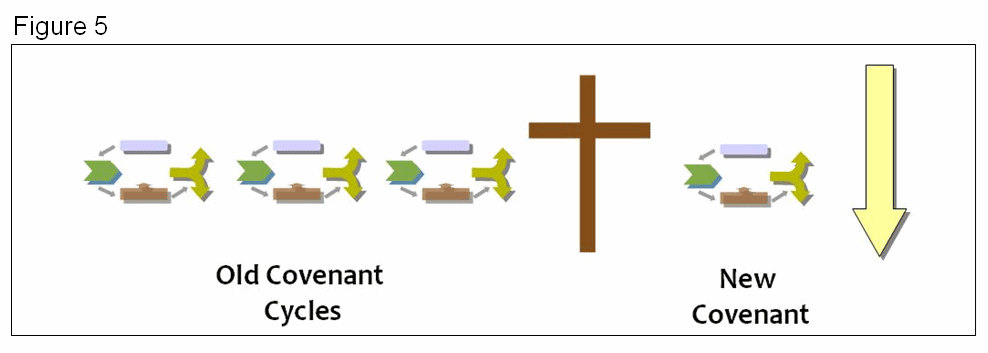
Figure 5
The following five areas of application take aspects of the Old Covenant arrangement—God, history, demands, and promises—and ask how they relate to the New Covenant.
1. Their LORD is our Lord. The easiest connections to make are when dealing with the oracles that discuss the character of God, which of course never changes. Here is a case of strict continuity between Israel and the church. Isaiah 40:12-31 speaks of God's tremendous wisdom and power, displayed in creation and in his sovereign rule over the nations. He is not to be compared with idols or with any human power. That idea will preach in any church today!
2. Their history may be our history. Sometimes the prophets recall God's promises and saving acts on behalf of his people that directly apply to the church. Consider Micah 7:18-20, where the prophet recalls God's promises to show steadfast love to Abraham and Jacob. These promises provide the basis of assurance that their sins will be forgiven. The New Testament is clear that the promises to Abraham are given to those who are in Christ (Galatians 3:29). That part of their history is also our history, and we can count on God's forgiveness and love, even when confronted by the enormity of our sins.
On the other hand, sometimes the redemptive distance between the prophet and the church calls for a more indirect approach. For example, Hosea 11:1-4 recalls God's kindness to Israel in the wilderness, and their response of unfaithfulness. Many preachers and theologians would not see the Exodus as "our" history, since that event occurred under the Mosaic covenant. However, the New Testament repeatedly applies Exodus imagery and themes to Christ's life and to our own redemption from sin and death (see Matthew 2:15, Mark 1:2-3, Revelation 15:2-4). Since Christ has redeemed us with mighty acts of judgment and salvation, we have an Exodus of our own to recall and for which we should give thanks.
3. Their demands may be our demands. Some covenant demands for righteous behavior translate easily. Micah 6:8 calls for God's people to do justice, love mercy, and walk humbly with God, while Hosea 4:1-14 rails against murder, lying, stealing, cursing, and adultery. Jeremiah 22:13-30 condemns injustice and greed. All of these passages find clear parallels in the lives of our hearers, who are still under the injunction to "be holy, for I am holy" (Leviticus 11:44, 1 Peter 1:14-16).
On the other hand, Malachi demands tithing, while Haggai exhorts his people to build a temple. Again, depending on theological perspective, the distance may be too great for a straightforward application. As Haddon Robinson advises (see endnotes), one should move up the ladder of abstraction, deriving increasingly general principles from specific demands, guided by scriptural parallels. So Malachi's tithing may translate to sacrificial and joyful giving (2 Corinthians 8). Or Haggai may encourage us to build up the temple of the church (which becomes people and not a building, 1 Peter 2:4-5) or to put God's priorities ahead of our personal comfort (Luke 9:23-24). Either the prophetic demands are directly applicable to our situation, or else a more general principle can supply the parallel.
4. Their promises may be our history. At times, what was future for the original audience is now past for us. The promises and warnings that God gave have already come to pass. So when modern readers see God threatening to destroy Jerusalem in Amos 3:11-15, that word is not directly a threat for us, since ancient Jerusalem was destroyed in 586 B.C. Instead, we can think of the oracle as it must have been preserved for the exiles that lived through the destruction of Jerusalem. Amos 3 explains why God's people have suffered so, highlights the seriousness of God's wrath, and guarantees the coming of the judgment that he still has in store at the return of Christ.
When Isaiah spoke of a future restoration from exile (43:1-7), which is past from our perspective, we can thank God for keeping his Word and caring for the faithful remnant, and we can reflect on how God continues to protect his people in the midst of suffering and trials.
The preacher should also note that some oracles seem to be partially fulfilled, as today we live in the "already but not yet" tension of the new age. A preacher can work from Joel 2:28-32, where God says he will pour out his Spirit freely on his people. This happened at Pentecost, and we can be grateful for God's past action and presence by his Spirit. However, the latter part of this prophecy, that "the sun shall be turned to darkness, and the moon to blood, before the great and awesome day of the LORD comes," has not yet come to pass—we still await the final judgment.
5. Their promises may be our promises. Finally, what was future to them may still be future to us. We can preach from Zechariah 14 about the coming time when God will visit his people, splitting the Mount of Olives in two, saving them from their enemies, and making the entire land "holy to the LORD." Or we can talk about the coming of the Son of Man on the clouds in Daniel 7, when he receives the kingdom from the Ancient of Days.
Of course, one oracle or book may contain several of these phases. Consider, for example, the book of Joel. The prophet depicts a locust invasion (past for both Israel and us), an actual invasion of an army (future for Israel and past for us), the pouring out of his Spirit after those days (future for Israel and past for us), and the valley of judgment on the day of the LORD (future for Israel and for us). Some of these words point to their past, some to their present, some to their near future, some to the New Covenant mission, and some to the coming rule of God on earth (see figure 6). We should be aware of how each of these elements applies to our own situation.
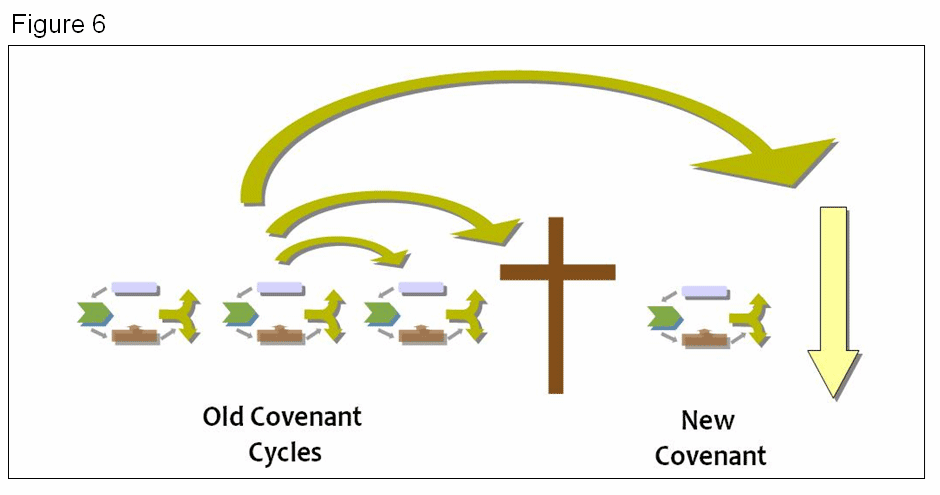
Figure 6
The point of all of these examples is to show how the oracles of the prophets remain relevant for our day. Instead of drawing limited parallels between prophets and individuals in our church, or between Israel and our nation, this approach relies on the much broader base of a shared communal identity as the people of God.
This approach will give the preacher more material to work with, since most OT prophetic passages fit this description. It can also bring confidence in application because it provides consistent criteria for an interpreter.
Finally, this model can help to build a community's identity. Too often our people look into the Bible to find only themselves. Of course, God's promises, warnings, and declarations do affect our day-to-day lives, our most minute decisions, and the inner thoughts of our hearts. But especially in the prophets they address these realities from the perspective of being a member of a community that is in relationship with God. As parishioners learn that this wonderful Lord and his gracious promises come to them because they are part of the church, their membership in it will become more central to their self-understanding.
The prophets were not isolated individuals, and neither are we. We are all members of a community that is bound together by thick theological cords. Those cords not only connect us to the present, but by memory they reach back into the past, where God has proven himself in mighty deeds of salvation and judgment. By hope they also stretch into the future, where God will usher in his glorious kingdom in a climactic manner, making all things new. These cords provide the bridge from their time to ours.
Endnote
Haddon Robinson, "The Heresy of Application: An Interview with Haddon Robinson", Leadership 18 (Fall 1997): 20-27. This article also appears in The Art & Craft of Biblical Preaching, edited by Robinson and Larson (Zondervan, 2005), pp. 306-310.
Drew Thompson is the teaching pastor at The Chapel, in Brunswick, Georgia.











